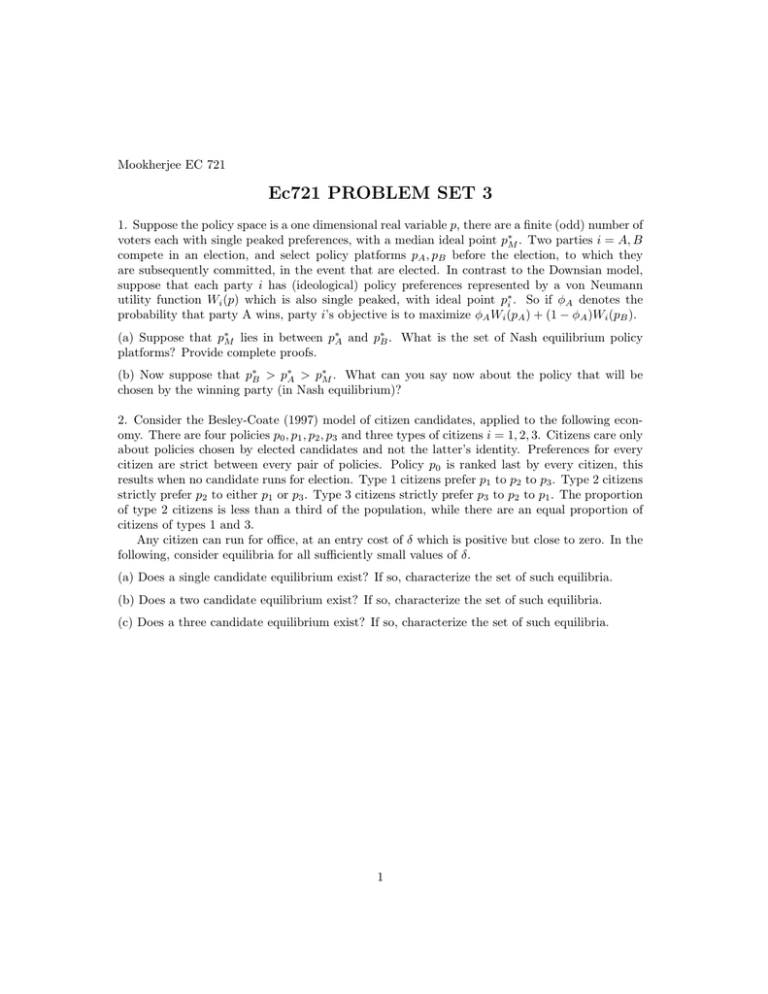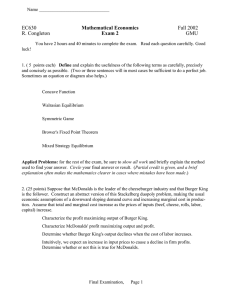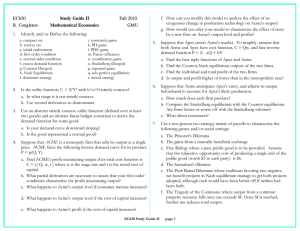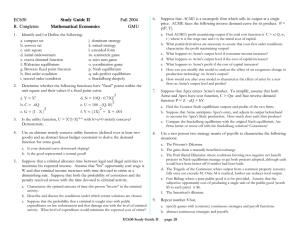Ec721 PROBLEM SET 3
advertisement

Mookherjee EC 721 Ec721 PROBLEM SET 3 1. Suppose the policy space is a one dimensional real variable p, there are a finite (odd) number of voters each with single peaked preferences, with a median ideal point p∗M . Two parties i = A, B compete in an election, and select policy platforms pA , pB before the election, to which they are subsequently committed, in the event that are elected. In contrast to the Downsian model, suppose that each party i has (ideological) policy preferences represented by a von Neumann utility function Wi (p) which is also single peaked, with ideal point p∗i . So if φA denotes the probability that party A wins, party i’s objective is to maximize φA Wi (pA ) + (1 − φA )Wi (pB ). (a) Suppose that p∗M lies in between p∗A and p∗B . What is the set of Nash equilibrium policy platforms? Provide complete proofs. (b) Now suppose that p∗B > p∗A > p∗M . What can you say now about the policy that will be chosen by the winning party (in Nash equilibrium)? 2. Consider the Besley-Coate (1997) model of citizen candidates, applied to the following economy. There are four policies p0 , p1 , p2 , p3 and three types of citizens i = 1, 2, 3. Citizens care only about policies chosen by elected candidates and not the latter’s identity. Preferences for every citizen are strict between every pair of policies. Policy p0 is ranked last by every citizen, this results when no candidate runs for election. Type 1 citizens prefer p1 to p2 to p3 . Type 2 citizens strictly prefer p2 to either p1 or p3 . Type 3 citizens strictly prefer p3 to p2 to p1 . The proportion of type 2 citizens is less than a third of the population, while there are an equal proportion of citizens of types 1 and 3. Any citizen can run for office, at an entry cost of δ which is positive but close to zero. In the following, consider equilibria for all sufficiently small values of δ. (a) Does a single candidate equilibrium exist? If so, characterize the set of such equilibria. (b) Does a two candidate equilibrium exist? If so, characterize the set of such equilibria. (c) Does a three candidate equilibrium exist? If so, characterize the set of such equilibria. 1











